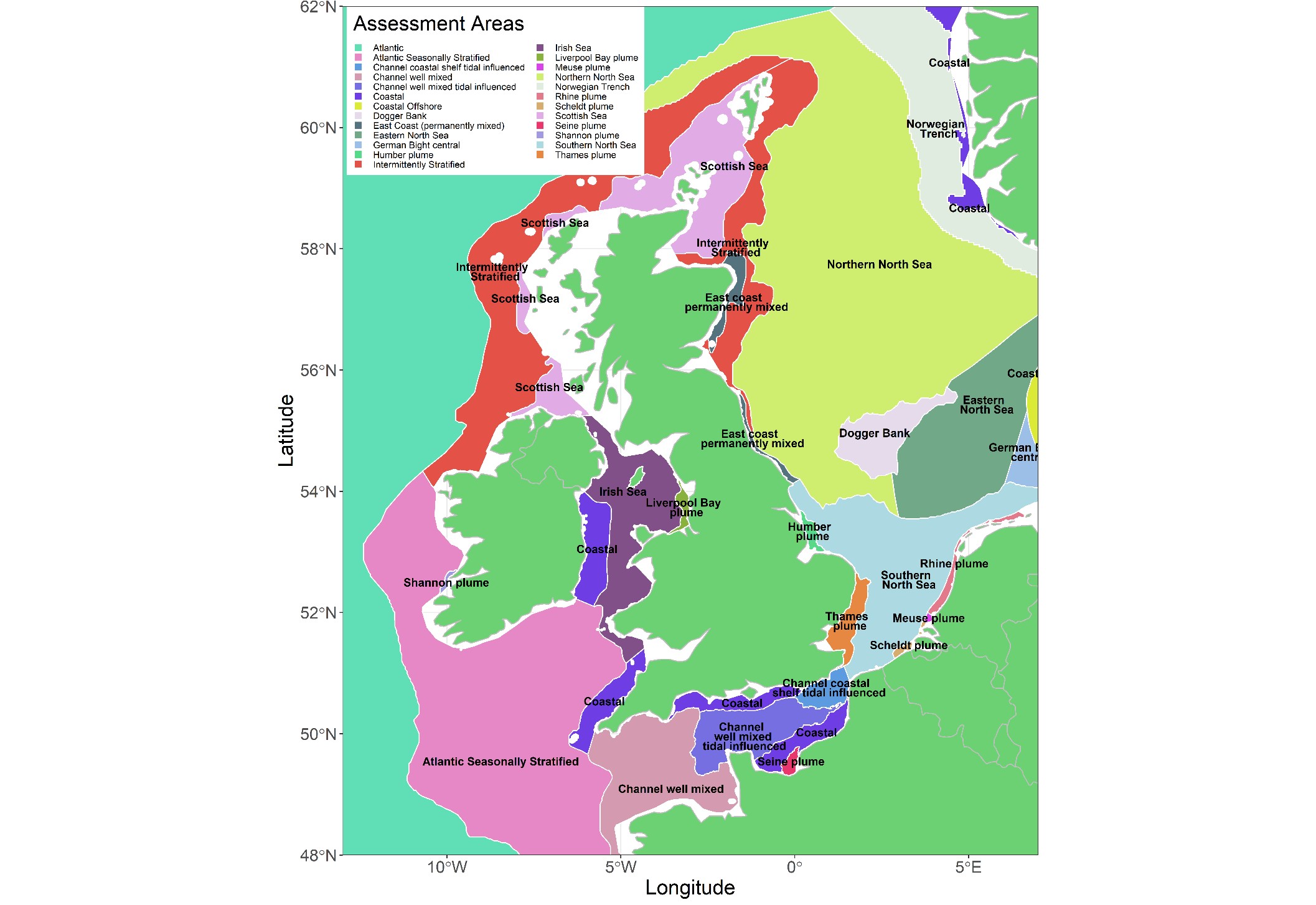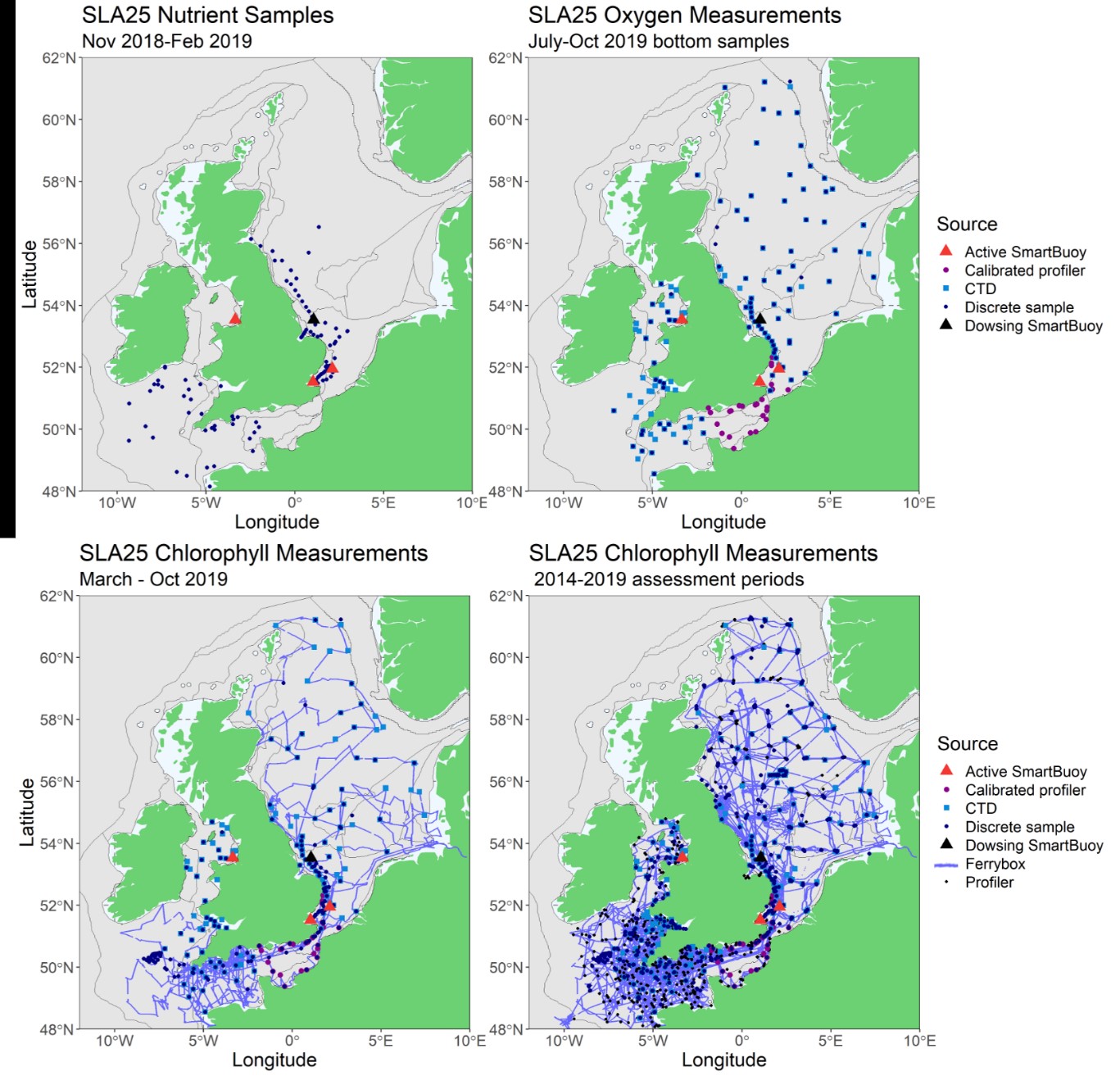
To protect the health of our seas and oceans, we need to understand the level and impact of human pressures, such as fisheries, contaminants and eutrophication.
To do this we collect samples of fish and water, track the movements of fish, visualise and assess the marine environment, and classify samples using molecular and microscopic techniques.
To monitor water quality across all parts of the ocean, we use a range of platforms including the RV Cefas Endeavour, Smart Buoys and unmanned area vehicles and satellite imagery.
Monitoring eutrophication in UK marine waters
To monitor eutrophication, it is important to understand the long-term changes in our coastal and marine water quality, and if those changes are related to human activities.
Eutrophication is the build-up of rich nutrients in a body of water (such as a lagoon, estuary, or sea) which causes a dense growth of plant life. In seas, these often take the form of algal blooms, which can be so large it is possible to see them with satellite imagery.
These blooms can be caused by run-off of human farming fertilisers and other chemicals such as detergents or sewage deposited into the sea as a result of human activities and impact the balance of the ecosystem, depleting oxygen levels and even clogging up human infrastructure such as power station outlets.

“We work with Defra and the Environment Agency to assess coastal and marine water quality and to make sure that we understand our impact on these our important ecosystems.
"One of our challenges has been to respond to shifts in our understanding of eutrophication, and how we can become more confident in our national assessments by better use of high frequency data, improved technology and working across the catchment to coast continuum - the area across which nutrients move from their place of use to the sea” explains Cefas’ Michelle Devlin.
Trialling new technologies on the RV Cefas Endeavour
Cefas’ RV Endeavour plays a vital role in national eutrophication assessments. It collects the water quality data every year that helps us assess if UK marine waters are clean and safe. It collects lots of different water quality data that tells us about the impact of land-based nutrients and pollution.
The vessel uses a range of technology from SmartBuoys –moored autonomous systems capable of recording fixed point data for months on end at sea , Ferryboxes – installed on the vessel to automatically record data as the ship is underway, to in-situ sampling equipment such as Niskin bottles deployed over the side of the ship to sample water from both the surface and at depth.

In February 2020 Cefas scientists ran a new Ferrybox system on Cefas Endeavour during a marine survey. The new system measures multiple parameters in support of fisheries surveys and sampling operations, replacing an older, less reliable system.
The data autonomously collected every minute by the Ferrybox can be used for many monitoring and assessment requirements. For example, measurements of fluorescence can act as a proxy for the concentration of algae in the water, a key indicator of eutrophication status.
“Monitoring just gives you a water quality snapshot at any given time – and we don’t always have enough sampling equipment in the right places in the right time. The new Ferrybox system will improve our coverage through automatically collecting data wherever the vessel goes.
"For example, for a typical year, this can result in over 200,000 extra measurements of fluorescence alone. ” explains Cefas’ Eleanor Haigh.
A water quality snapshot
The use of multiple instruments such as the Niskin bottles and autonomous Ferrybox on-board Cefas Endeavour significantly increased the amount of data available for each assessment area.
Although many of these instruments are still reliant on some form of discrete sampling to calibrate measurements, a comparison between these indicators, and one that relies solely on discrete sampling -nutrients- demonstrates the increase in spatial coverage that multiple sources of data can provide.

Traditional and new technology working hand in hand to deliver our monitoring programs
As the world, and the multiple pressures on our marine environement, changes it is increasingly important to measure, monitor and assess the health of our marine environment. We still need to sample through traditional methods such as the discrete, in-situ sampling but need to develop new and novel ways to collect the water quality measurements.
Accessible large, data rich collection methods, such as FerryBox, modelling and satellite data will all play an important part in the future of UK water quality monitoring. By bringing together a variety of data sources to reveal a fuller picture of the health of our seas and oceans.
Further information
Our work is driven by policies such as the UK Marine Strategy and the EU Marine Strategy Framework.
To enable the UK government to successfully implement these strategies, and measure their progress, Cefas have taken a leading role in developing methods and technologies to innovate and improve the efficiency of monitoring programmes, both in the UK and beyond.
To find out more on our role in marine monitoring visit our website.